Life with a busy family often feels like a constant juggle. Between work, school, activities, and simply trying to enjoy quality time together, home organization frequently falls to the bottom of the to-do list. Before you know it, clutter builds, stress increases, and finding anything becomes a frustrating ordeal. You know you need a change, but the idea of a massive decluttering project feels completely overwhelming.
That is where the 30-Day Declutter Challenge steps in. This guide offers a realistic, step-by-step approach designed specifically for busy homeowners, renters, and apartment dwellers. We break down the daunting task of decluttering into small, manageable daily actions. Over the next month, you will transform your home and, importantly, establish sustainable systems to keep it that way. You can achieve a calmer, more functional living space, even with a packed schedule and a budget in mind.
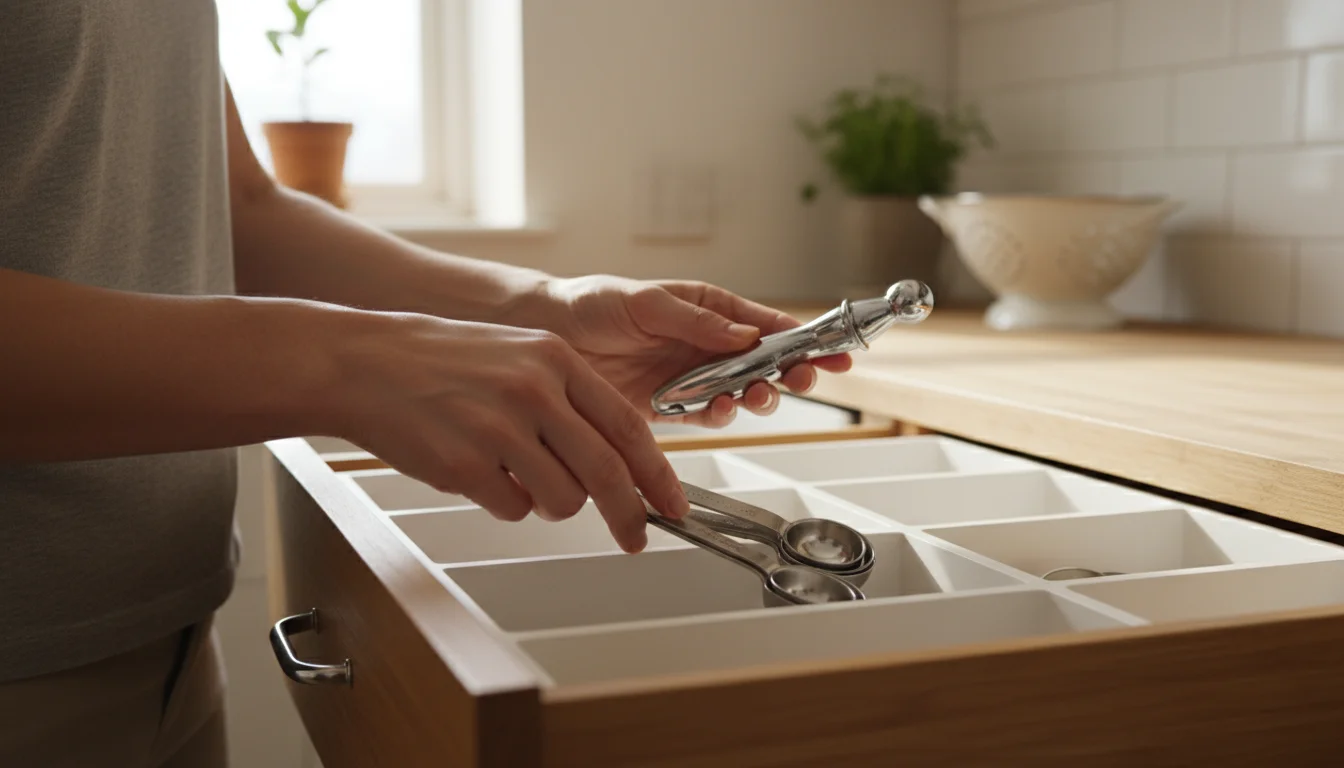
Why a 30-Day Declutter Challenge Works for Busy Households
The concept of a “declutter challenge” gained popularity because it addresses a fundamental human need: breaking down large goals into achievable segments. For busy families, this method proves particularly effective. You are not committing to an entire weekend of sorting or overhauling an entire room in one go. Instead, you dedicate a short, focused period each day to one small area.
Think about it: tackling one kitchen drawer takes significantly less time and energy than emptying your entire kitchen. Over thirty days, these small actions accumulate into a remarkable transformation. This incremental approach prevents burnout, allows you to integrate decluttering into your existing routine, and gives you a sense of accomplishment daily. Psychologists often point to the power of small wins in building momentum and self-efficacy. By consistently completing these minor tasks, you build confidence and maintain motivation.
Beyond the mental benefits, a decluttered home offers tangible advantages for families:
- Reduced Stress: A University of California, Los Angeles study found a direct correlation between cortisol levels (the stress hormone) and the amount of stuff in a woman’s home. A tidy environment fosters a calmer mind.
- Increased Efficiency: You spend less time searching for misplaced items, freeing up valuable minutes for family time or personal pursuits. For example, if you consistently misplace keys, setting up a designated spot for them saves you several minutes each day, totaling hours over a month.
- Improved Focus: A visually chaotic space competes for your attention. Clearing clutter helps you focus better on tasks, whether it is remote work, homework, or family activities.
- Easier Cleaning: Less stuff means fewer obstacles to clean around. Your regular cleaning routine becomes quicker and more thorough.
- Better Air Quality: Clutter collects dust and allergens. Reducing items, especially textiles, can contribute to a healthier indoor environment. You can find more information on maintaining good air quality on the EPA’s indoor air quality resources.
- Enhanced Family Harmony: Fewer arguments about lost items or untidy spaces contribute to a more peaceful household atmosphere.
This challenge empowers you to take control of your environment without sacrificing your precious family time or stretching your already thin schedule. It is about progress, not perfection, and finding realistic solutions that fit your unique life.
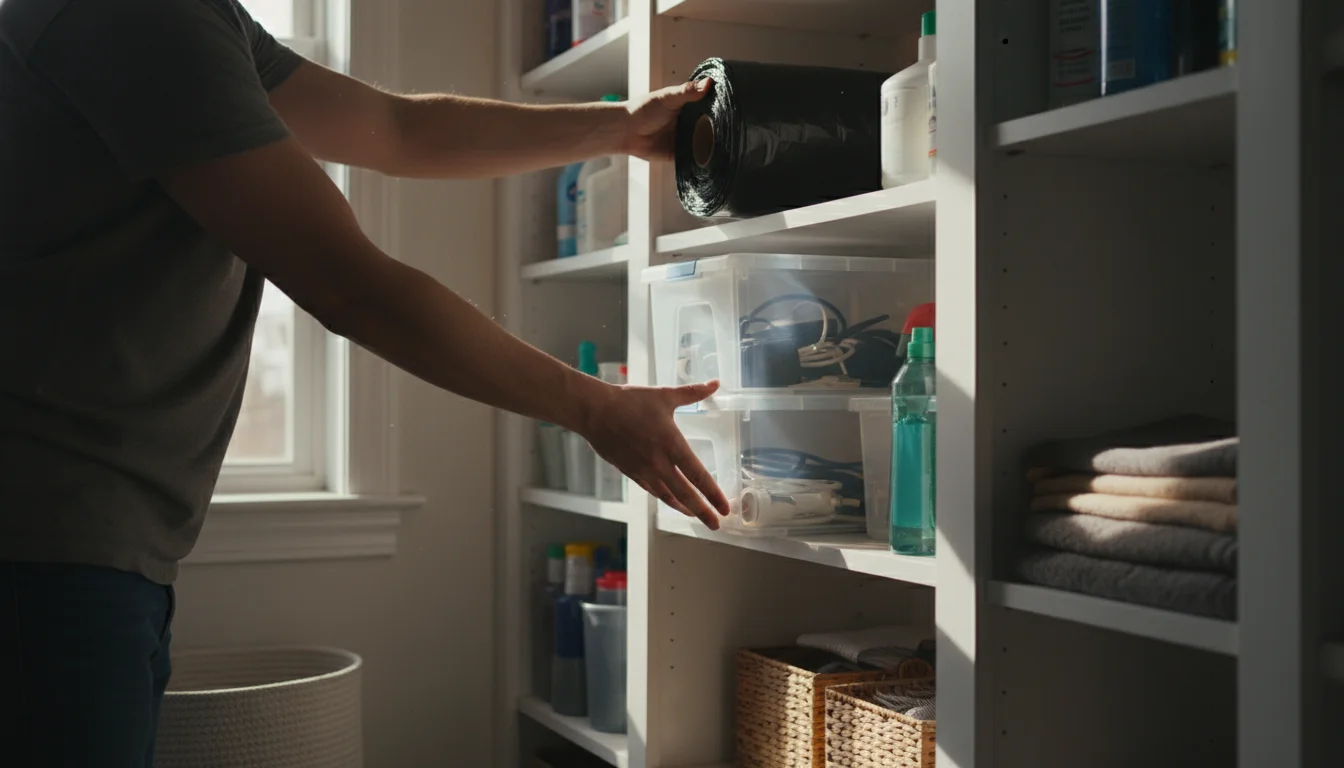
Preparing for Your Declutter Journey: Essential Steps
Before you dive into the daily tasks, setting the stage ensures your success. Preparation minimizes interruptions and helps you make efficient decisions. This phase requires minimal time but yields significant benefits throughout the challenge.
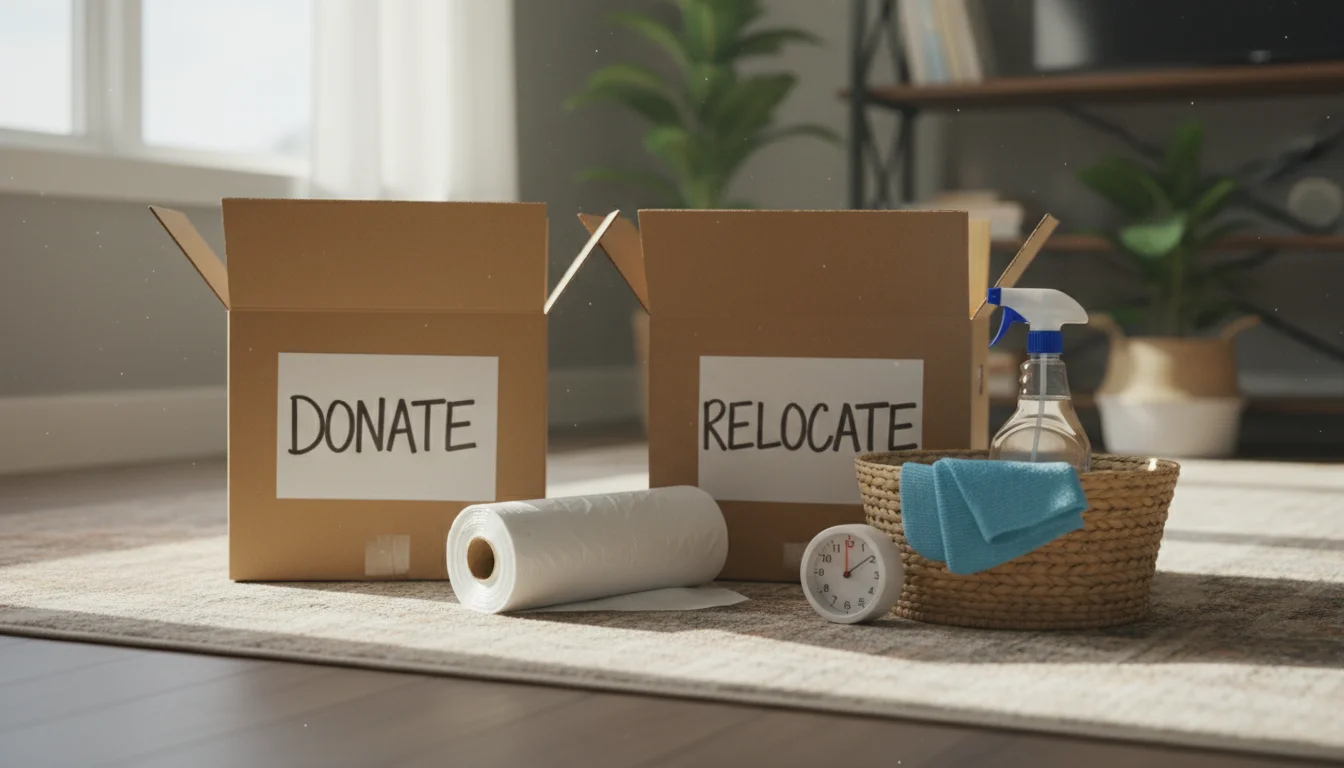
Gather Your Supplies
Having the right tools at hand prevents you from stopping mid-task to search for a trash bag. Prepare these items:
- Trash Bags: Keep a stack handy for immediate discards.
- Donation Boxes/Bags: Designate specific containers for items you will donate. Clearly label them “DONATE.”
- Relocate Bins/Bags: Use a basket or bag for items that belong in another room. Label it “RELOCATE.”
- Keep Containers: Have a few empty baskets or bins for items you decide to keep but need a new, organized home within the space.
- Cleaning Supplies: A microfiber cloth and an all-purpose cleaner allow you to wipe down surfaces once you remove items.
- Timer: A kitchen timer or your phone’s timer helps you stay focused and prevents tasks from expanding beyond your allotted time.

Understand Your “Zones”
A “zone” is simply a designated area or container for specific activities or items. For example, your entryway might have a “shoe zone,” a “key zone,” and a “mail zone.” Clearly defined zones make it easier to put things away and find them later. As you declutter, you will establish or refine these zones naturally.

Set Realistic Expectations
You will not achieve a minimalist home overnight, nor does every surface need to be perfectly bare. The goal is functionality, ease of maintenance, and a sense of calm. Some days, you might only tackle five items, and that is perfectly acceptable. Embrace imperfection and celebrate small victories.

Involve the Family (Age-Appropriately)
Children can participate by selecting toys to donate or helping put away items. Make it a game! Teenagers can take responsibility for their own spaces. Explain the benefits of a tidy home to everyone, emphasizing how it helps the whole family. However, understand that as the main driver of this challenge, you primarily guide the process.
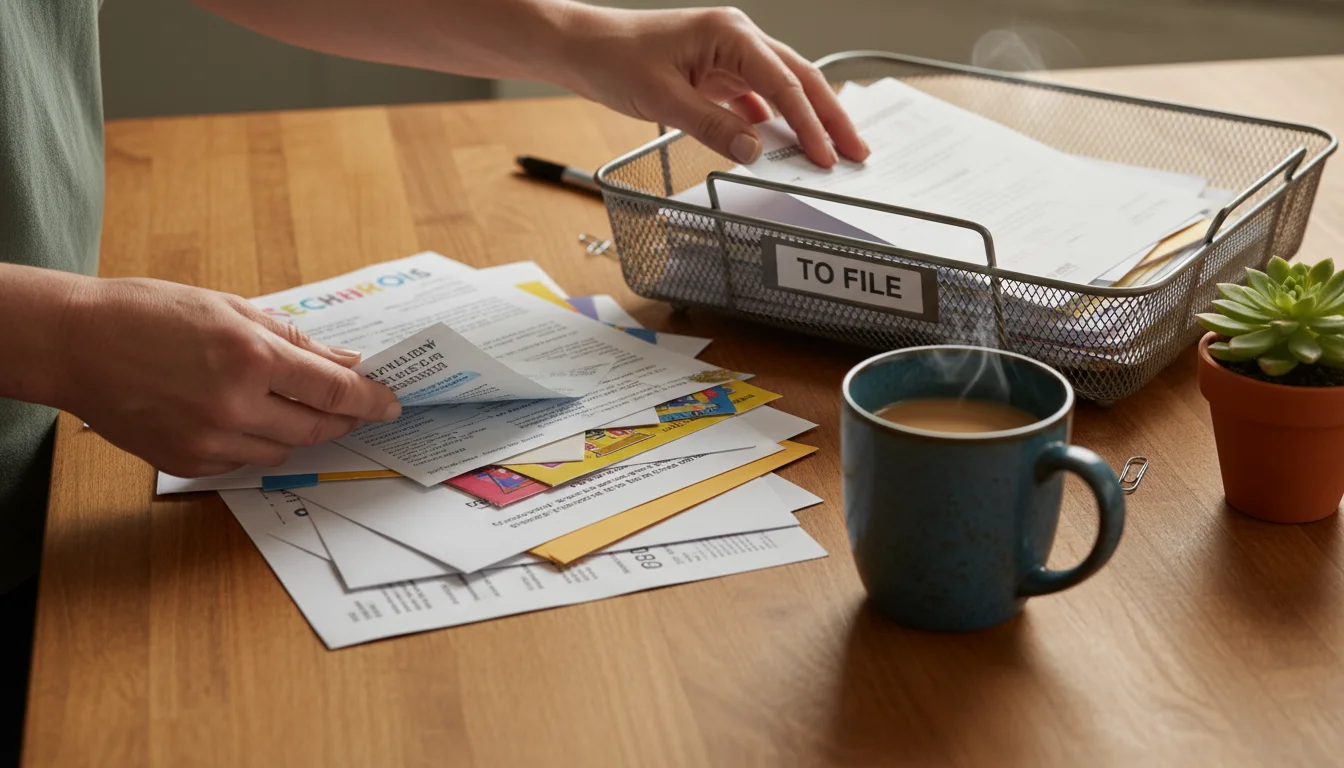
Your Day-by-Day Action Plan: The 30-Day Breakdown
This challenge provides a framework, but feel free to adjust the specific order based on your home’s needs and your schedule. The key is consistency: choose one small task each day and commit to 15-30 minutes of focused effort. Remember, progress over perfection!
- Day 1: Entryway/Mudroom Surface: Clear off any flat surfaces, hang up coats, put away shoes.
- Day 2: Mail/Paperwork Pile: Sort through any accumulated mail, bills, and papers. Shred what you do not need, file what you do.
- Day 3: Living Room Coffee Table/End Tables: Remove everything that does not belong. Organize remote controls.
- Day 4: One Kitchen Drawer (e.g., utensil drawer): Empty, wipe clean, keep only what you use.
- Day 5: Kitchen Countertops (one section): Clear one section of the counter, put away appliances not in daily use.
- Day 6: Bathroom Countertop: Clear off toiletries, only keep daily essentials accessible.
- Day 7: Bathroom Medicine Cabinet/One Drawer: Check expiration dates, discard old products.
- Day 8: Nightstand/Bedside Table: Clear surfaces, remove books you finished, put away charging cables.
- Day 9: Under the Bed: Remove anything stored here that does not serve a purpose.
- Day 10: One Shelf in a Pantry/Cupboard: Choose one shelf, remove expired food, organize items.
- Day 11: One Linen Closet Shelf: Fold and organize towels or sheets.
- Day 12: Junk Drawer (wherever it lives): Empty, sort, keep only truly essential items.
- Day 13: Your Wallet/Purse: Discard old receipts, loyalty cards you no longer use.
- Day 14: Desk Drawer/Office Supplies: Go through pens, paper clips, office gadgets.
- Day 15: Bookshelf Section (1-2 shelves): Remove unread books, books you will not reread. Consider donating.
- Day 16: Kids’ Toy Bin/Basket (one): Involve kids in choosing toys to donate or discard.
- Day 17: Refrigerator Door/Magnets: Remove old invitations, flyers. Organize remaining items.
- Day 18: Spice Cabinet/Drawer: Check expiration dates, consolidate duplicates.
- Day 19: Under the Kitchen Sink: Organize cleaning supplies, discard empty bottles.
- Day 20: One Closet Shelf/Small Section of Hanging Clothes: Focus on a single area, remove items you do not wear.
- Day 21: Digital Declutter (Phone Photos/Apps): Delete unnecessary apps, unwanted photos.
- Day 22: Remote Controls/Electronics Cables: Gather all remotes, label unknown cables. Discard unused ones.
- Day 23: Laundry Area Surface: Clear off any flat surfaces, put away laundry supplies.
- Day 24: Pet Supplies: Organize food, toys, grooming tools. Discard broken items.
- Day 25: Shower/Tub Area: Remove empty bottles, organize remaining products.
- Day 26: Under Bathroom Sink: Organize hair products, extra toiletries.
- Day 27: Car Console/Glove Compartment: Clean out trash, organize papers.
- Day 28: Small Decor Items/Knock-knacks: Evaluate decor; keep only what you love and display purposefully.
- Day 29: Magazine/Newspaper Piles: Recycle old publications.
- Day 30: Review and Refine: Walk through your home, identify areas that feel better, plan for ongoing maintenance. Schedule donation drop-off.
Remember, each completed task, no matter how small, contributes to your overall goal. Do not get discouraged if a day feels challenging. Simply pick up where you left off the next day.
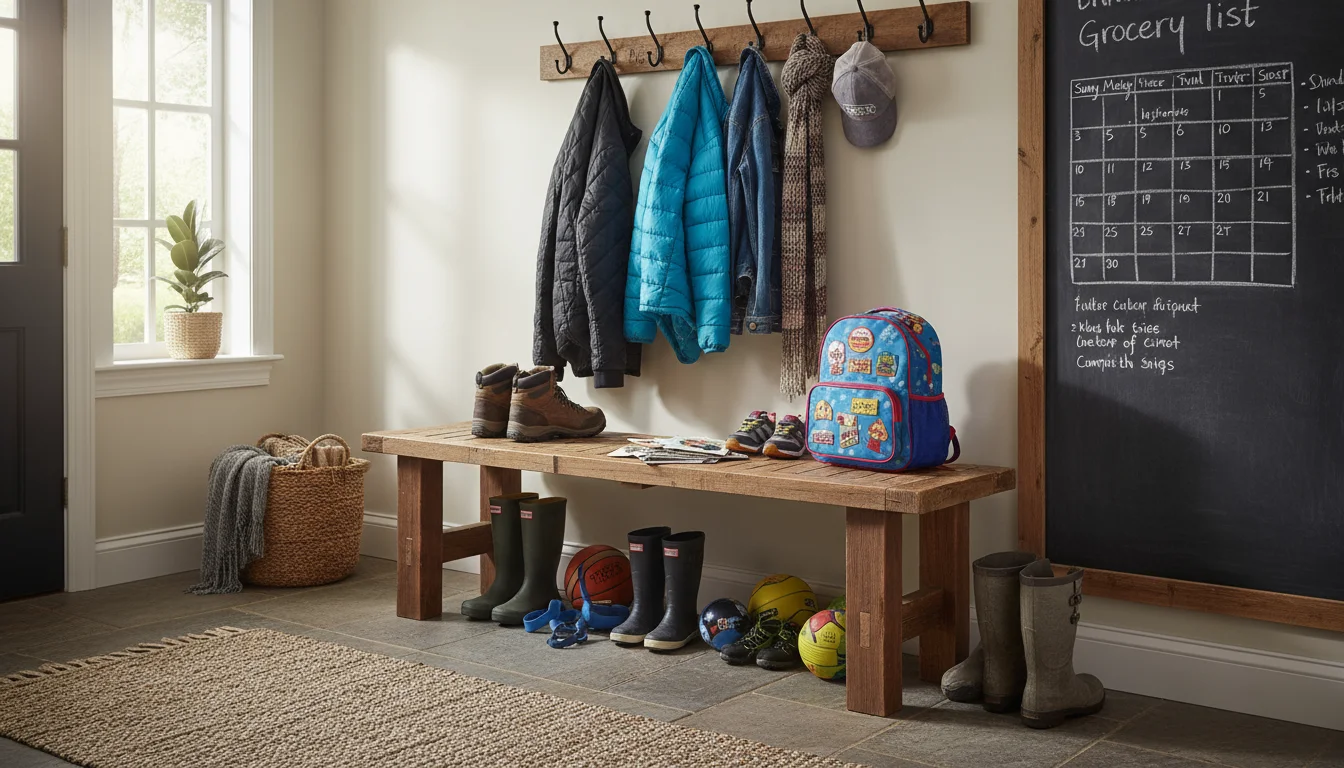
Tackling Common Clutter Hotspots
Certain areas in every home seem to attract clutter more than others. Focusing on these high-traffic, high-visibility spots can make a significant impact on the overall feel of your home. You already addressed some of these in the daily plan, but here we provide additional strategies.

The Kitchen: The Heart of the Home, The Magnet for Clutter
Kitchens often become dumping grounds for mail, keys, school papers, and more. Beyond the daily tasks, consider these strategies:
- Pantry: Implement a “first-in, first-out” system for food. Use clear bins to group similar items like snacks or baking supplies. Labeling helps everyone in the family locate items quickly.
- Drawers: Drawer dividers are game-changers. They stop items from shifting and creating chaos. You can find affordable options at dollar stores or use repurposed cardboard boxes.
- Counters: Designate specific spots for essential appliances you use daily. Everything else lives in a cupboard. This frees up visual space, making your kitchen feel larger and cleaner.
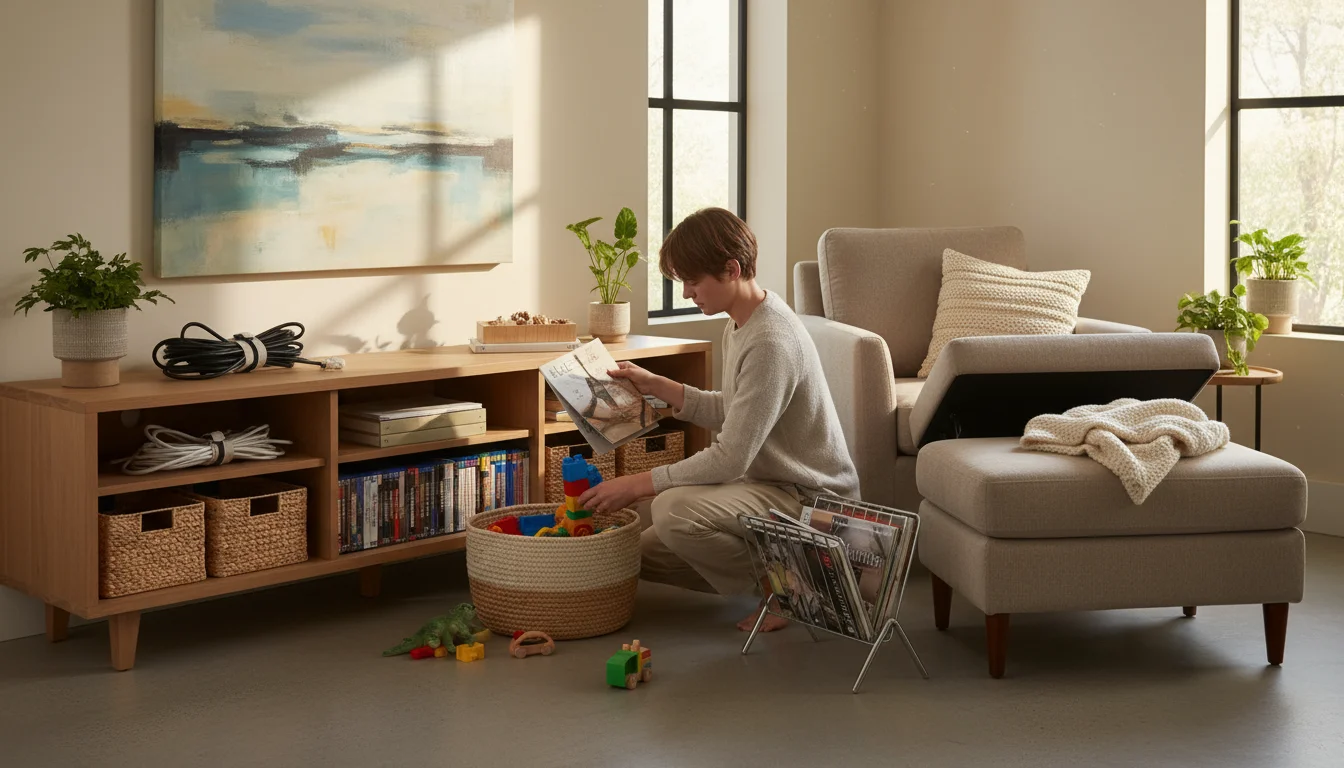
Living Room: The Family Gathering Space
Living rooms collect items from everyone. Control the inflow with these tips:
- Media and Electronics: Bundle cables with Velcro ties. Store games and movies in designated cabinets or decorative baskets. Consider a media console with closed storage to hide electronics.
- Books and Magazines: Periodically review your collection. Donate books you have read and will not revisit. Keep current magazines in a stylish holder, but recycle older issues.
- Blankets and Pillows: Use decorative baskets or ottomans with storage to contain throws and extra pillows.
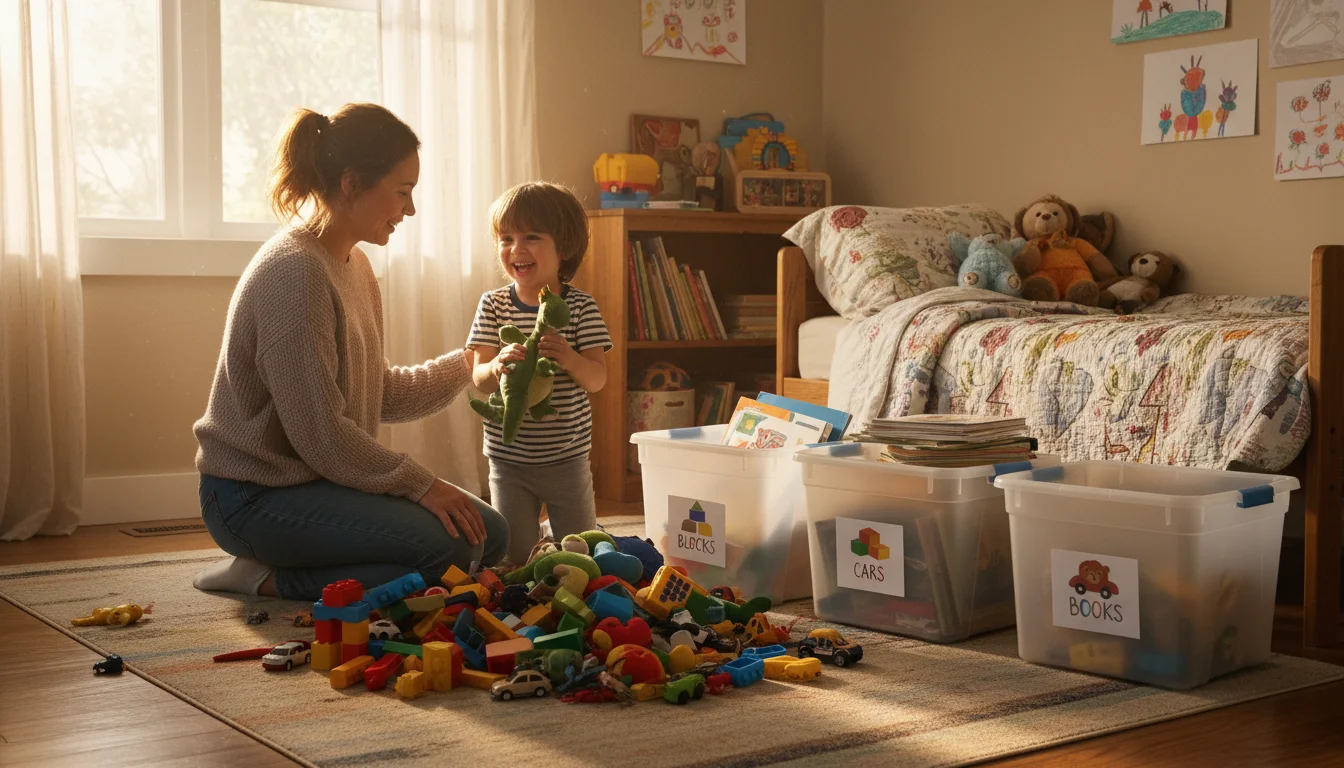
Bedrooms: Your Personal Sanctuary
Bedrooms should offer peace, but often become storage for clothes, books, and personal items.
- Closets: Focus on removing clothes that do not fit, are damaged, or you have not worn in over a year. Group similar items together (e.g., all shirts, all pants). Vertical organizers for shoes and accessories maximize space.
- Nightstands: Keep only the essentials: a lamp, a book, a glass of water. Store charging cables in a small drawer or cable organizer.
- Kids’ Rooms: This often presents the biggest challenge. Implement a “one in, one out” rule for toys. Use clear bins for toy categories. Label bins with both words and pictures for younger children.
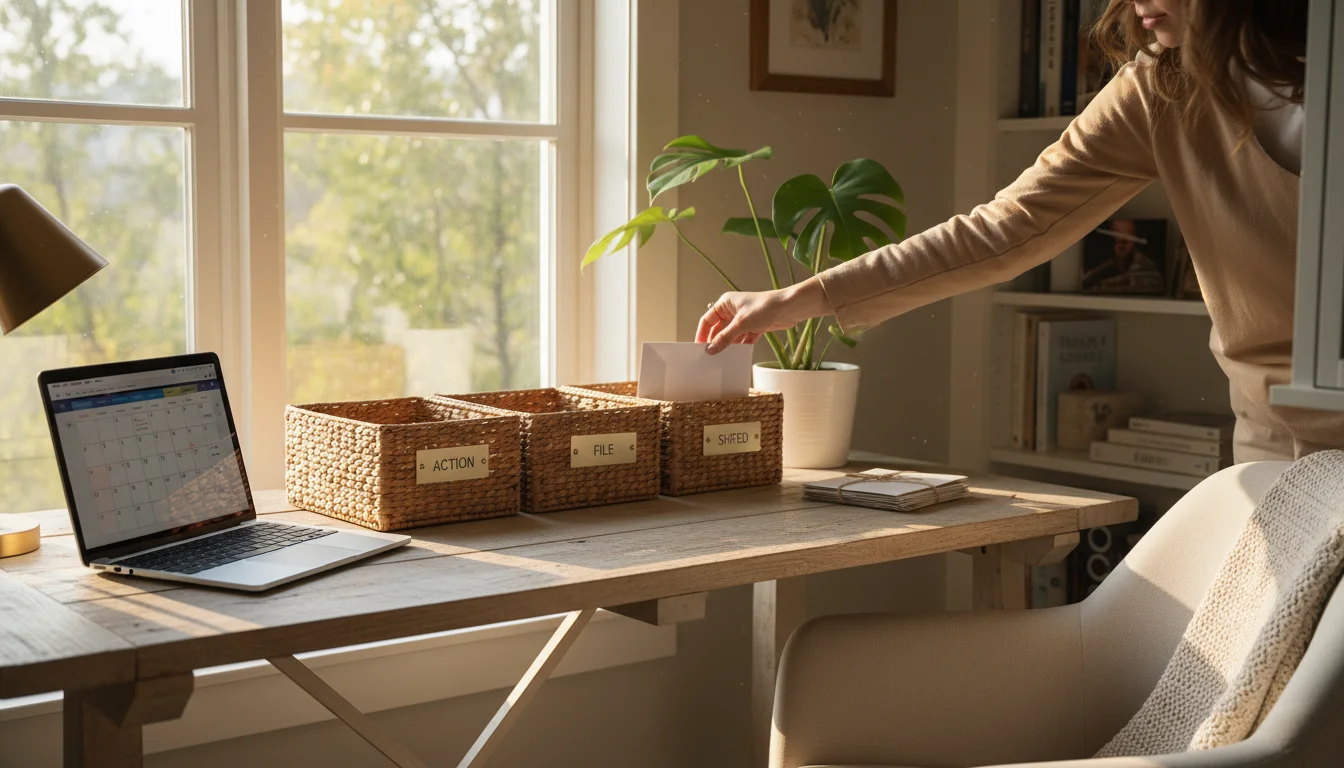
Home Office/Paperwork: The Endless Stream
Paper clutter can feel insurmountable. Establish a routine for managing it:
- Mail: Sort mail immediately upon entry. Create a system for “action,” “file,” and “shred” bins. Handle it once.
- Files: Go digital where possible. For physical documents, create a simple, intuitive filing system. Regularly purge outdated documents.
Addressing these common hotspots strategically will bring significant visual and functional improvements to your home.
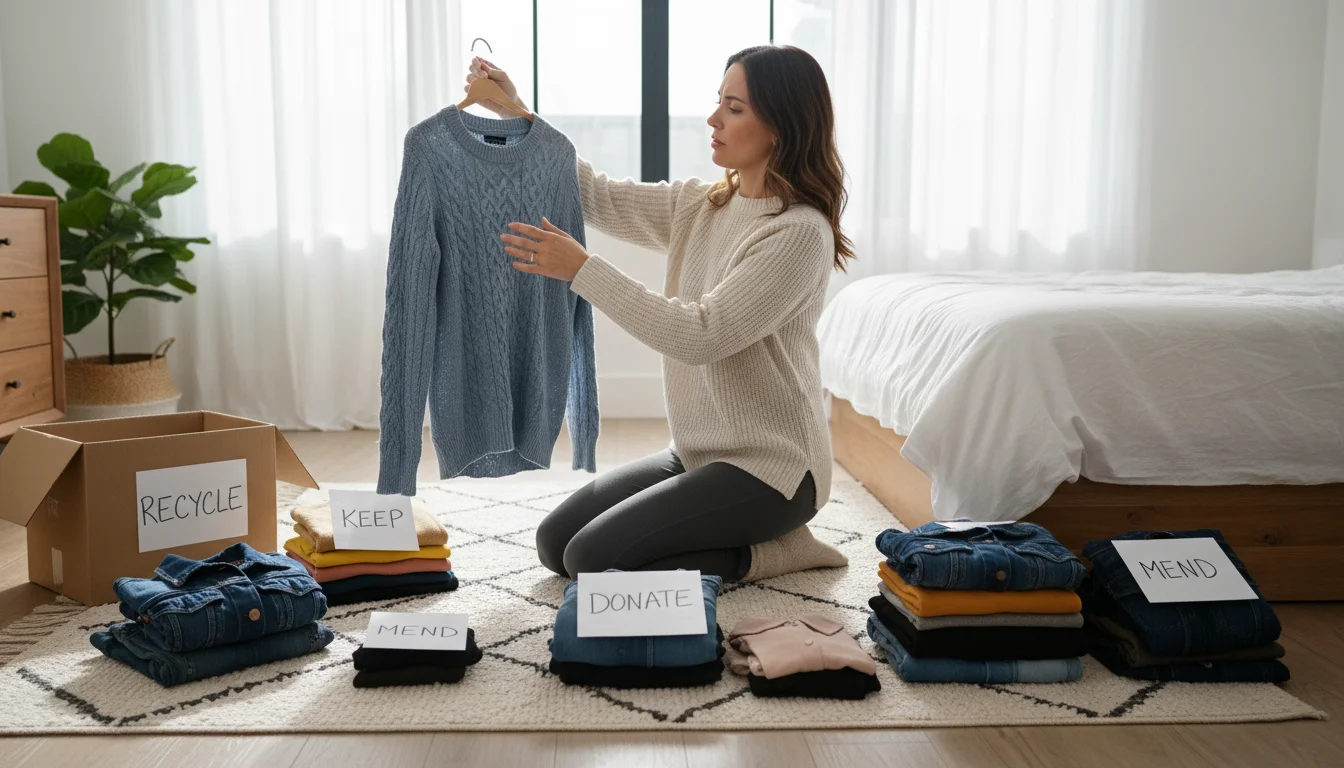
Making Smart Decisions: Keep, Donate, Trash, Relocate
The core of decluttering lies in making decisions about your items. This decision-making process can feel emotionally draining. Simplify it by asking a few key questions for each item:
- Do I use this regularly (at least once a year)?
- If yes, keep it.
- If no, proceed to the next question.
- Does this item bring me genuine joy or have significant sentimental value?
- If yes, keep it. (Be honest with yourself about “sentimental value” – does keeping it truly honor the memory, or does it just add to clutter?)
- If no, proceed to the next question.
- Is this item still functional and in good condition? Could someone else use it?
- If yes, donate or sell it.
- If no, proceed to the next question.
- Is this item broken, expired, unsafe, or truly trash?
- If yes, trash or recycle it appropriately.

The Four-Box Method:
As you work through an area, use your designated bins and boxes for the following categories:
- Keep: Items that belong in the current space and you actively use or love. Give them a designated spot.
- Donate/Sell: Items in good condition that you no longer need but someone else could use. Promptly schedule a donation drop-off or research selling options. Websites like Facebook Marketplace or local consignment shops offer avenues for selling.
- Trash/Recycle: Broken items, expired products, things beyond repair, or true waste. Dispose of these immediately and responsibly.
- Relocate: Items that belong in another room. Do not get sidetracked by taking them to their new home immediately; finish your current area first, then relocate all items at once.
Resist the “just in case” trap. Holding onto items for hypothetical future scenarios often leads to unnecessary clutter. Trust that if you genuinely need something later, you can replace it. This mindset shift is crucial for long-term decluttering success.
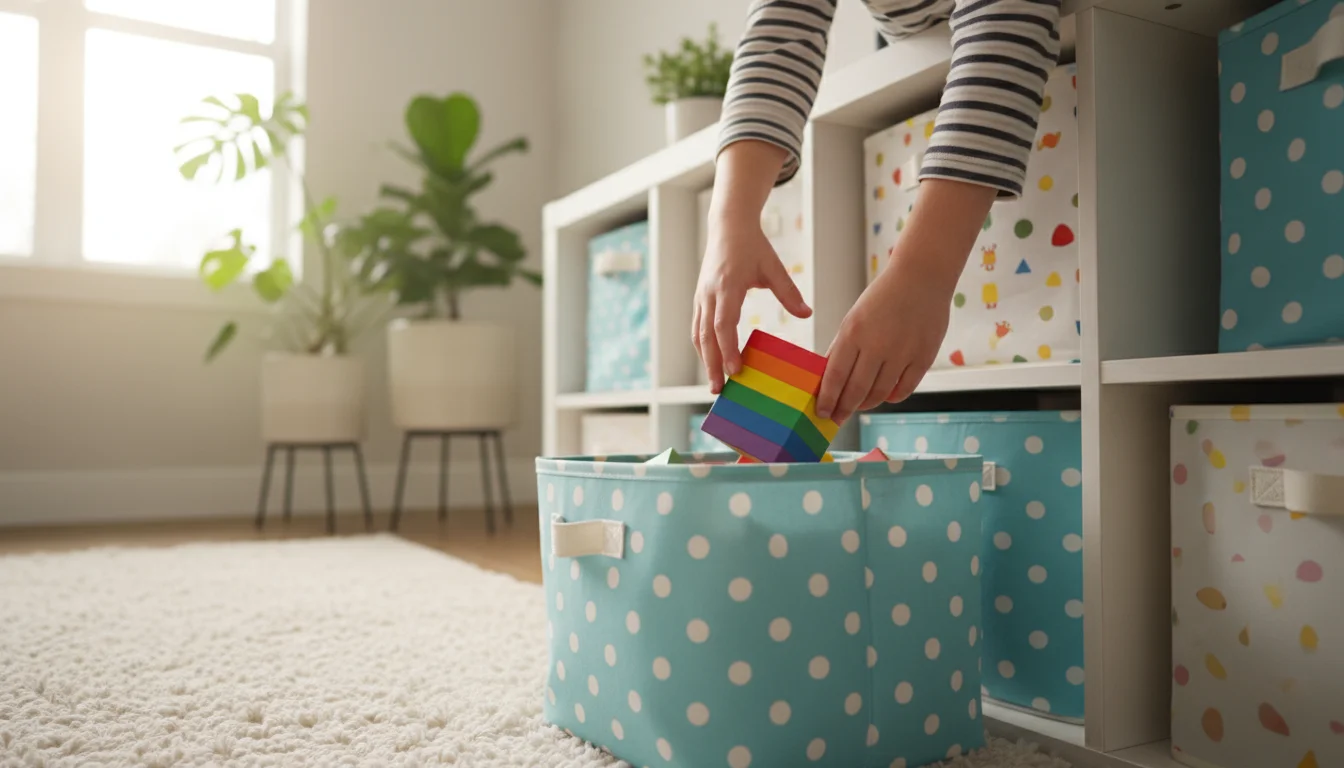
Maintaining Your Organized Home: Beyond Day 30
Completing the 30-Day Declutter Challenge is a fantastic achievement, but it is just the beginning. The real victory comes from maintaining your organized space. Implementing simple, consistent habits prevents clutter from creeping back in.

Establish the “One In, One Out” Rule
For every new item you bring into your home, especially in categories prone to clutter (clothing, books, toys), commit to removing one similar item. Buy a new shirt? Donate an old one. Purchase a new book? Donate a finished one. This simple rule prevents accumulation.
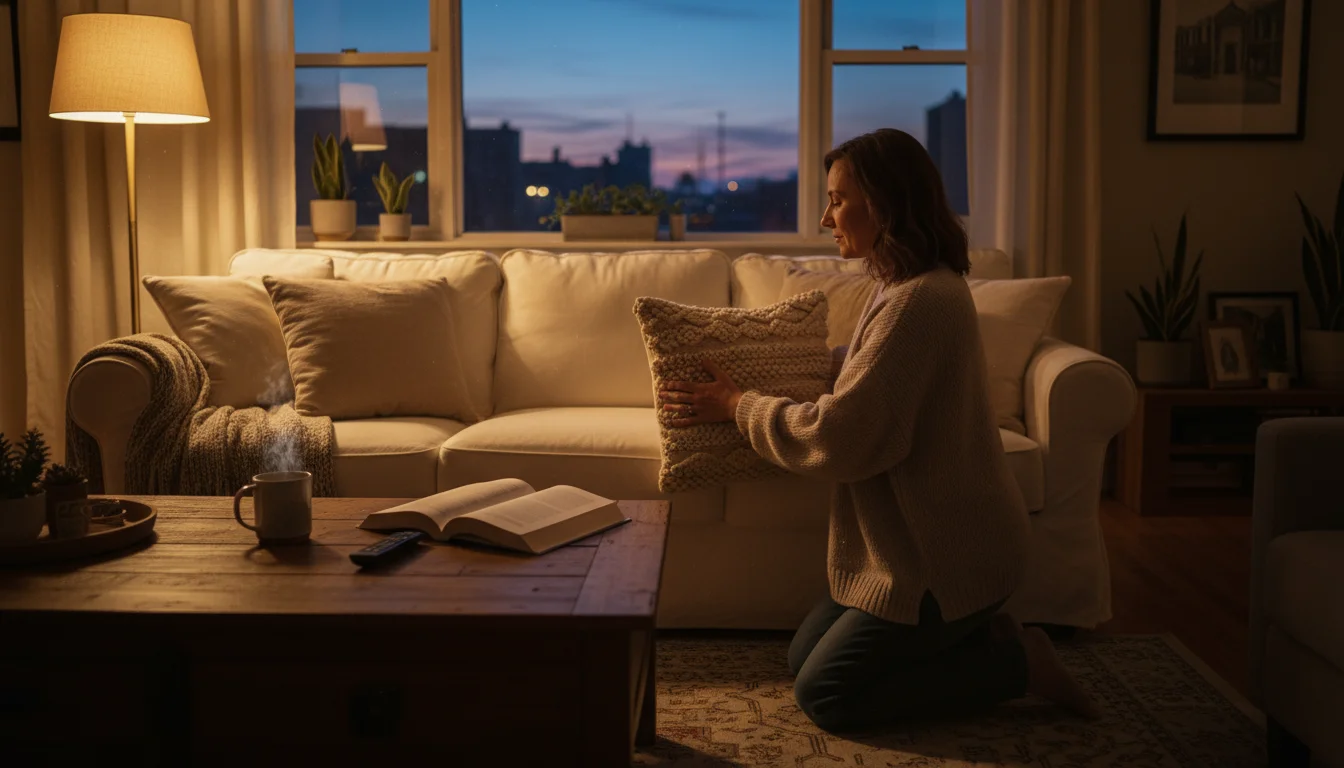
The Five-Minute Tidy
Each evening, before bed, spend just five to ten minutes tidying main living areas. Put away items that accumulated during the day, fluff pillows, and clear surfaces. This small effort prevents major clutter buildups and ensures you wake up to a calmer home.
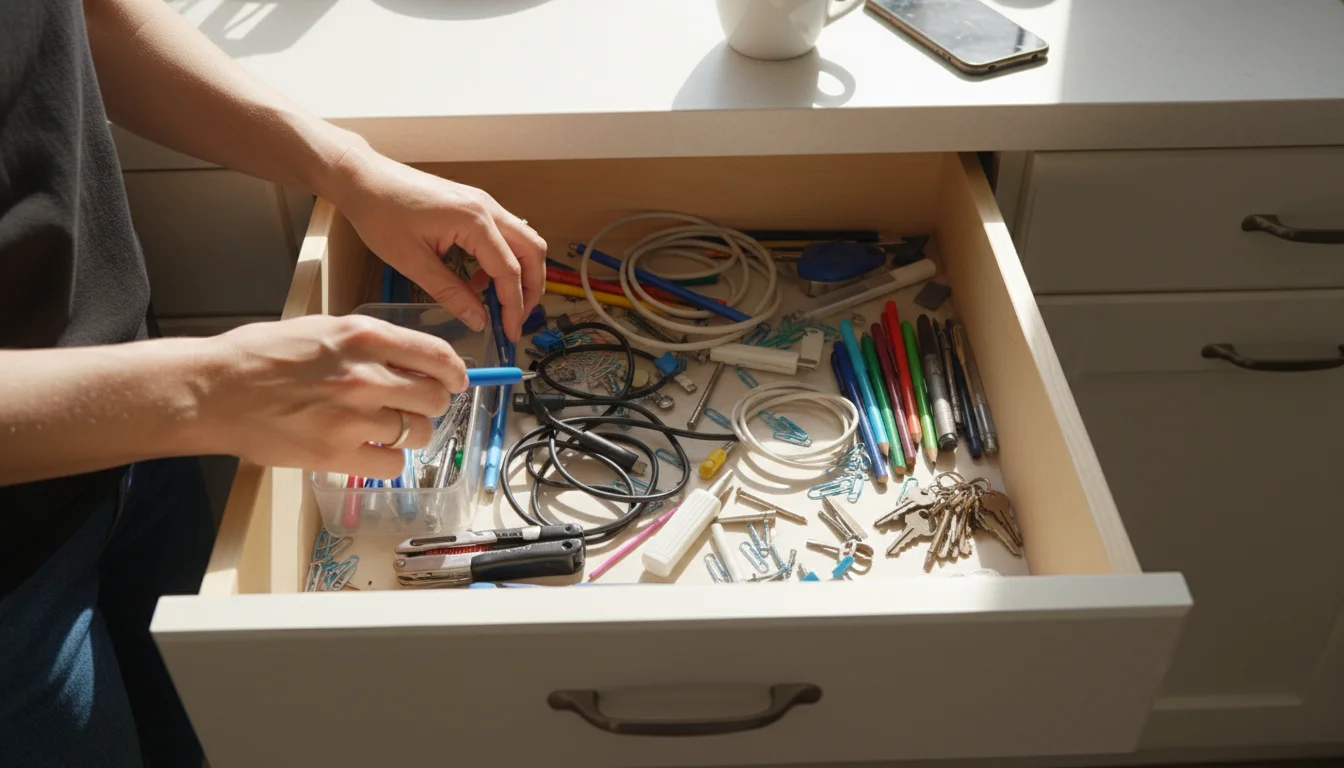
Regular Mini-Declutters
Schedule a quick, focused decluttering session once a week or every other week. This could be 15 minutes dedicated to one specific drawer, a shelf, or a basket. This proactive approach keeps clutter at bay and makes larger cleanouts unnecessary.

Assign Homes to Everything
If an item does not have a designated spot, it often ends up on a countertop or floor. Ensure every item you keep has a “home.” When you bring something new into your house, immediately decide where it lives. If you cannot find a logical place, reconsider if you truly need it.
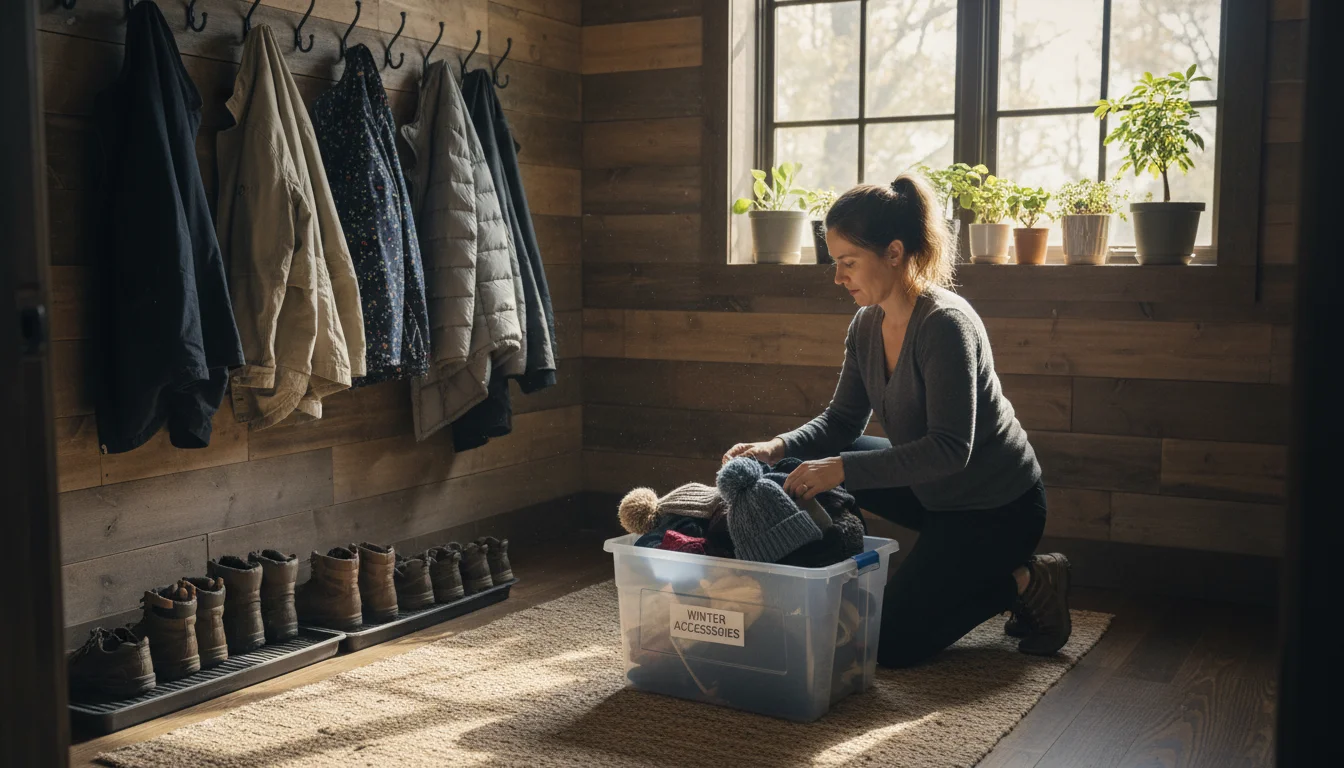
Seasonal Sweeps
Twice a year, typically in spring and fall, conduct a slightly larger decluttering sweep. This is a great time to evaluate seasonal clothing, holiday decorations, or outdoor gear. This bigger picture review helps you stay on top of less frequently used items.
Consistency, not perfection, maintains an organized home. Small, regular efforts yield significant long-term results.
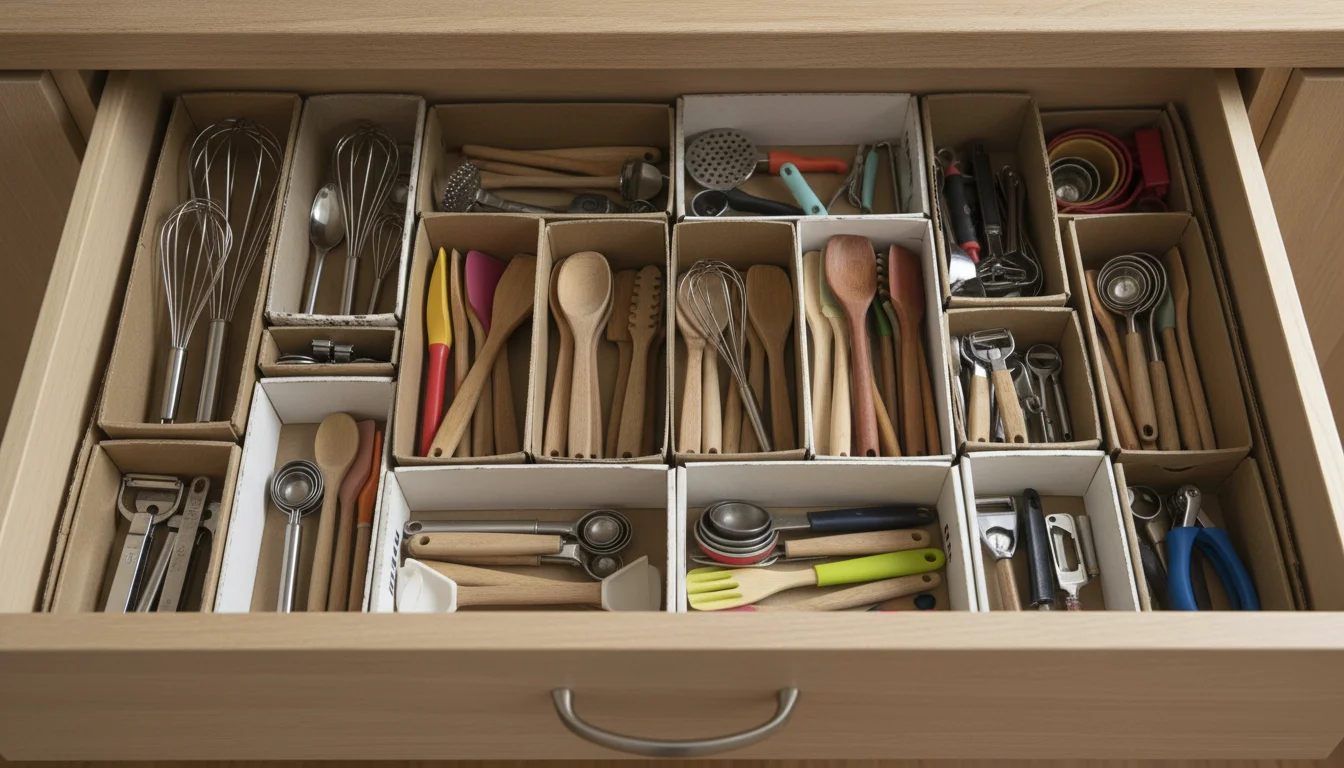
Budget-Friendly Storage Solutions and Organization Hacks
You do not need to spend a fortune on fancy organizational products to achieve an organized home. Many effective solutions are either free, low-cost, or involve repurposing items you already own.
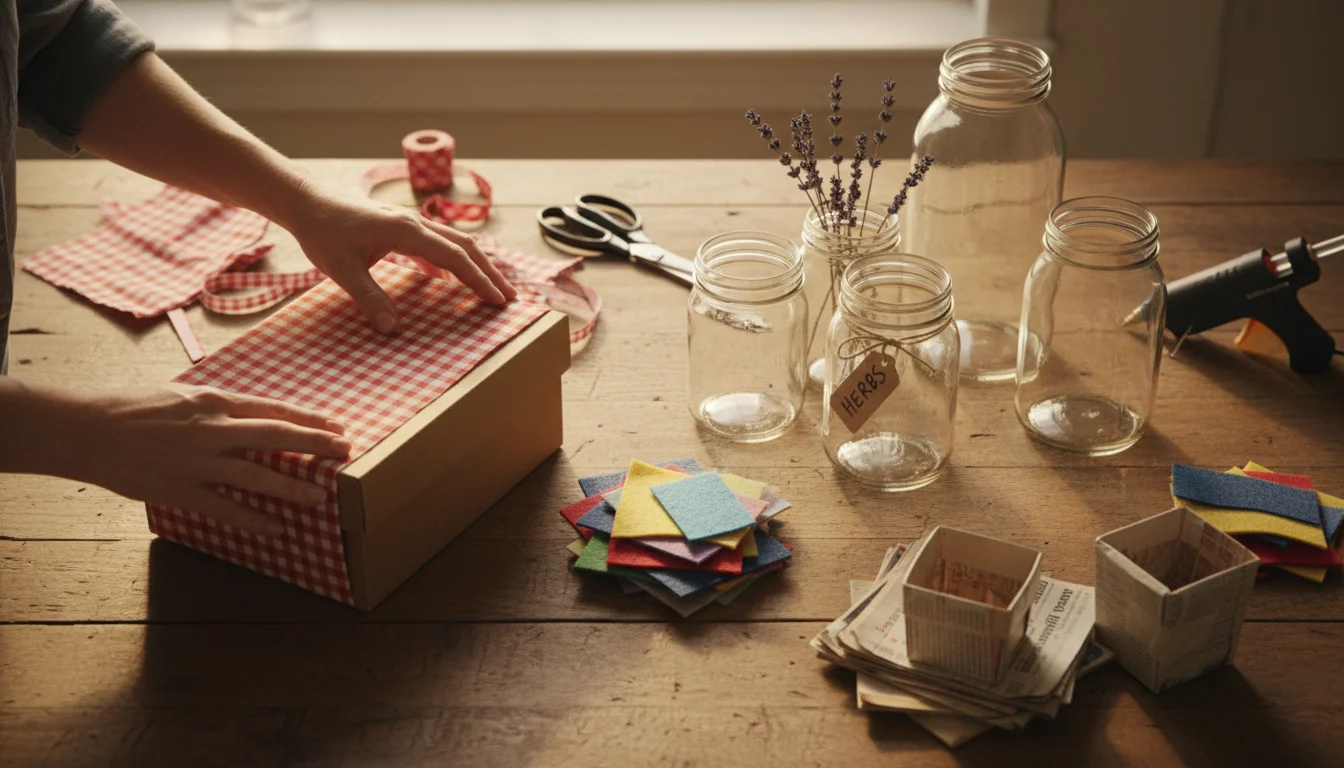
Repurpose What You Have
- Shoe Boxes: Cover them with decorative paper or fabric. They make excellent drawer dividers for socks, undergarments, office supplies, or bathroom toiletries.
- Glass Jars: Empty food jars (e.g., pickle jars, jam jars) clean up beautifully. Use them to store dry goods in the pantry, cotton balls in the bathroom, or craft supplies.
- Cereal Boxes: Cut down tall cereal boxes to create magazine files or file holders for papers on your desk.
- Old Baskets/Containers: Before buying new, look at baskets or containers you already own in other rooms. Can you reassign them?

DIY Solutions
- Tension Rods: Use small tension rods under sinks to hang spray bottles, maximizing vertical space. They also work inside cupboards for hanging scarves or small towels.
- Pegboards: A pegboard in a utility closet, craft room, or garage offers customizable vertical storage for tools, cleaning supplies, or art materials. Purchase one from a hardware store and paint it to match your decor.
- Command Hooks: These inexpensive hooks provide versatile, damage-free hanging solutions for keys, measuring spoons inside a cabinet door, or even lightweight art.
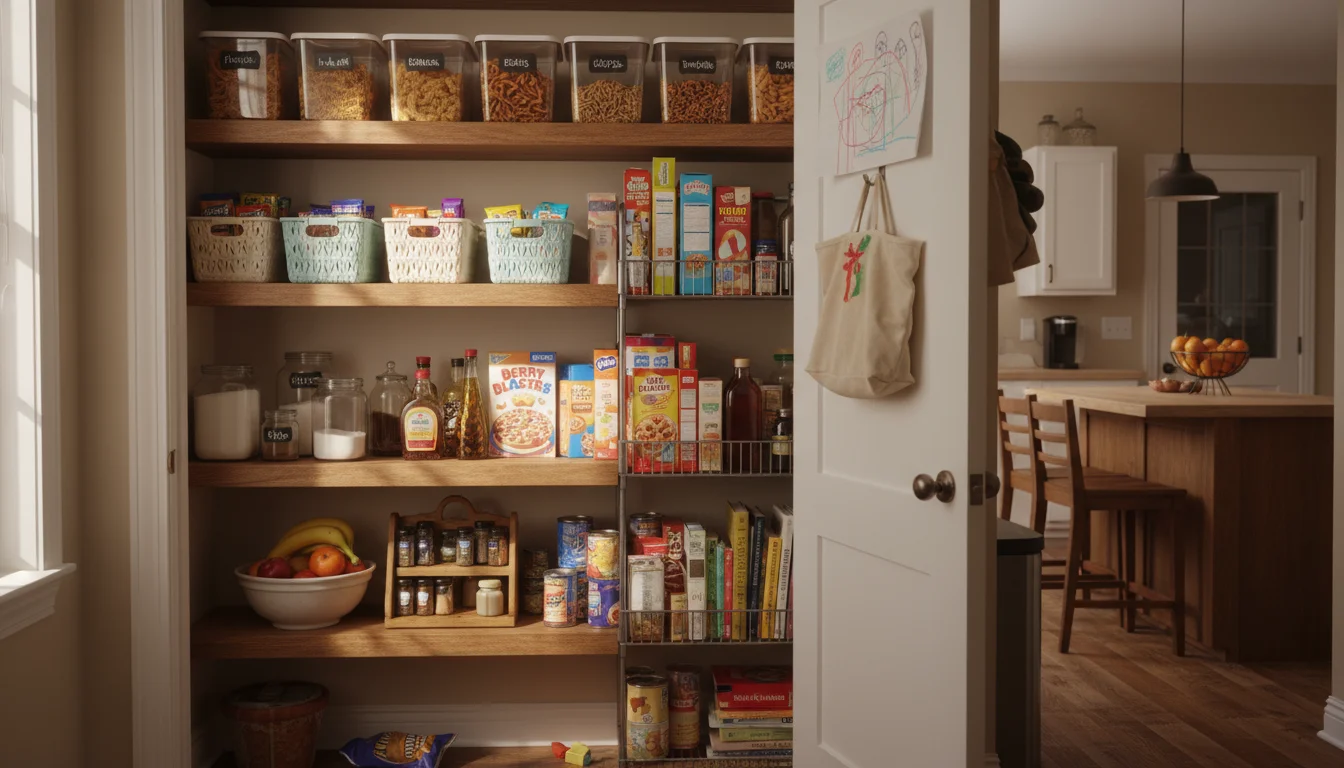
Affordable Product Finds
- Dollar Stores/Discount Retailers: Look for plastic bins, drawer organizers, small baskets, and food storage containers. While not always the highest quality, they serve their purpose for many organizational needs.
- IKEA’s Budget-Friendly Options: IKEA offers numerous smart and affordable storage solutions, from drawer dividers to shelving units that maximize vertical space in small apartments. You can explore their range for home organization ideas.
- Clear Bins: These are available at various price points and allow you to see what is inside, reducing the need to rummage. They work wonderfully in pantries, closets, and under beds.
- Magazine Holders: Not just for magazines, these can organize cutting boards in the kitchen, foil/plastic wrap boxes, or files on a desk.
Smart organization does not require a large investment. Focus on functional, sustainable solutions that fit your budget and your home’s unique layout.
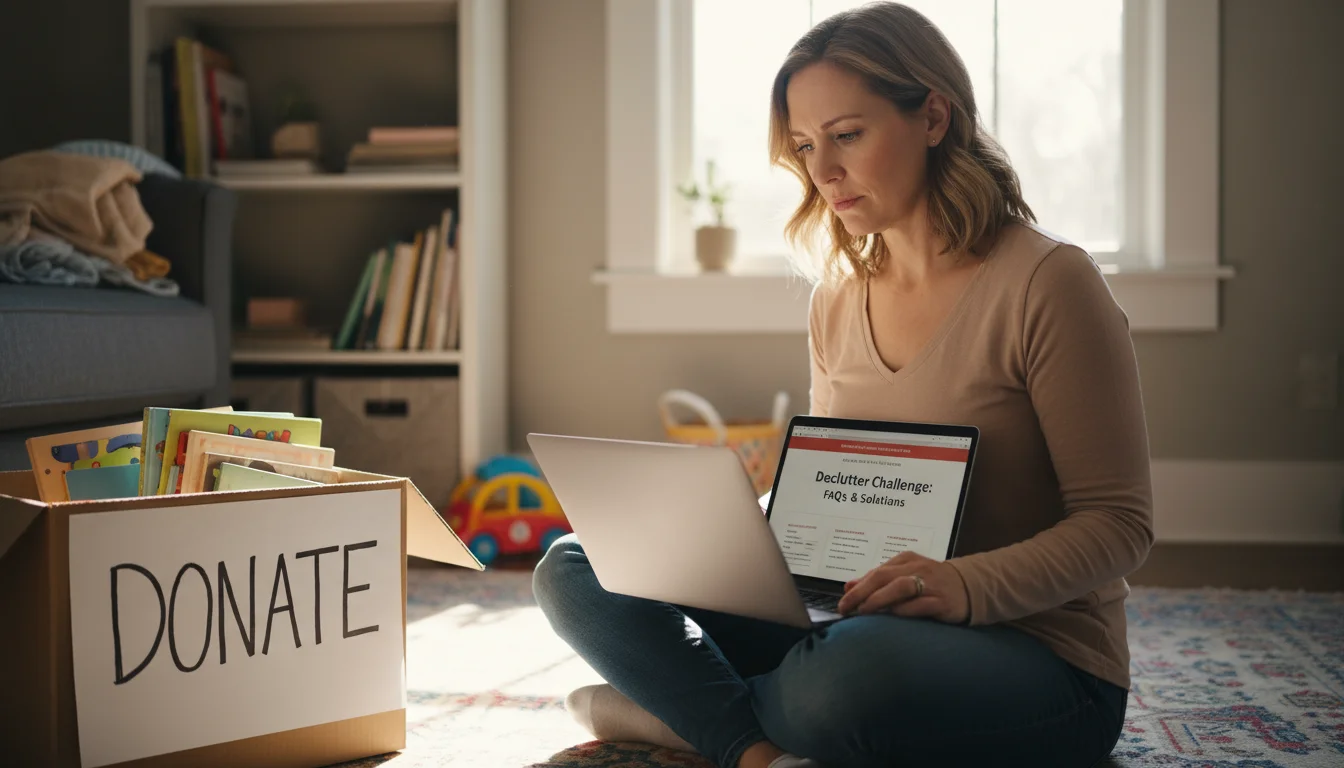
Frequently Asked Questions
What if I miss a day (or several days) during the challenge?
Do not worry! Life happens. The most important thing is to simply pick up where you left off. Do not try to “catch up” by doing multiple days at once, which can lead to burnout. Just restart with the next day’s task. Consistency is more important than strict adherence to the calendar.
How do I handle sentimental items that are difficult to let go of?
Sentimental items pose a unique challenge. Start by choosing only your absolute favorites. Can you display them meaningfully? For items you cannot part with but cannot display, consider designating one “memory box” or bin. Only keep what fits within that container. Take photos of other sentimental items you want to remember, then let the physical object go. This process honors the memory without cluttering your home.
What do I do with items I want to sell?
Create a dedicated “sell” zone for these items. Give yourself a strict deadline, perhaps two weeks or a month, to list and sell them. If they do not sell by that deadline, commit to donating them instead. This prevents unsold items from becoming new clutter.
My family isn’t on board with decluttering, what then?
Lead by example. Start with your personal spaces (your closet, your nightstand). As your efforts create a calmer atmosphere and easier routines, others often become more open. For shared spaces, involve family members in discussions about the benefits. For children, make it a fun game, not a chore. Respect individual ownership, but establish clear rules for shared areas.
How do I prevent my home from getting cluttered again after the 30 days?
Long-term success comes from implementing habits. Practice the “one in, one out” rule, perform a daily 5-10 minute tidy, and schedule regular mini-declutters. Regularly review your spaces and ask if items still serve a purpose. An organized home requires ongoing, small efforts, not a single massive overhaul.
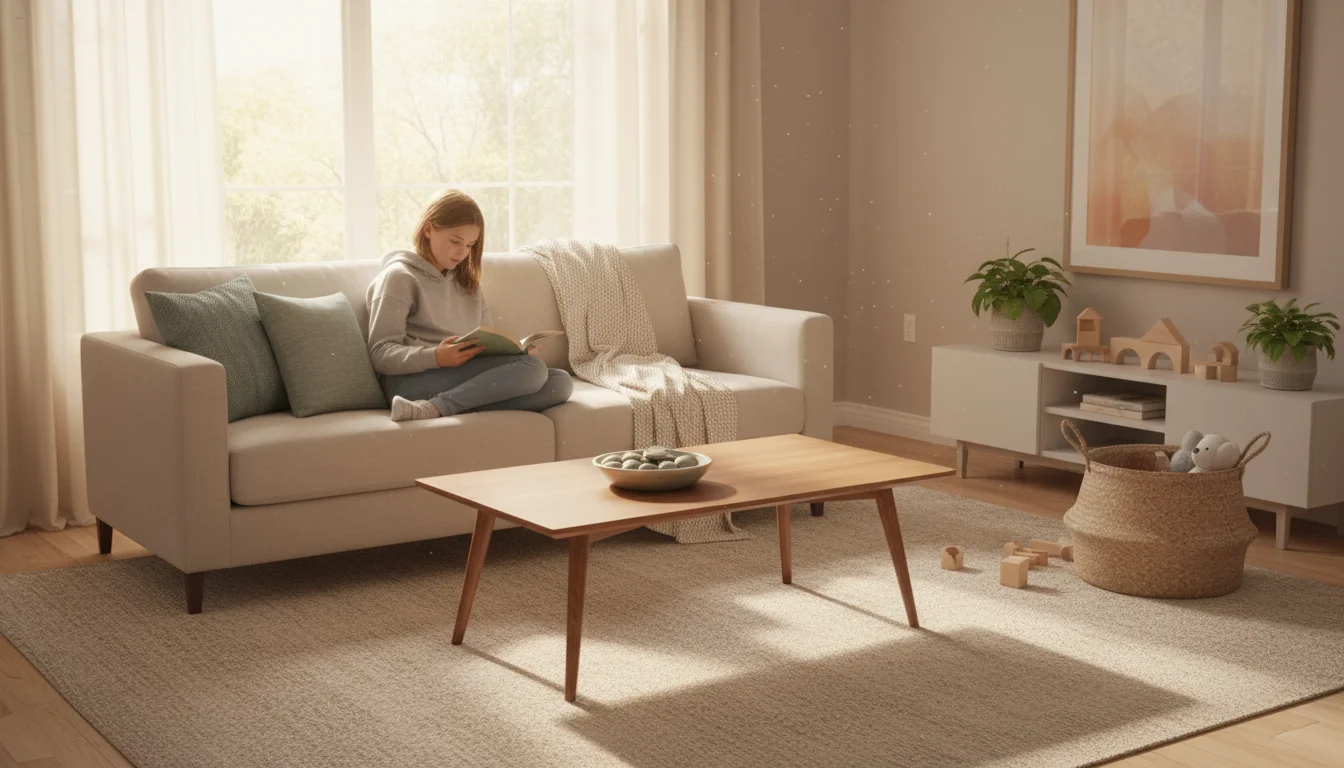
Your Path to a Brighter, Calmer Home
Embarking on the 30-Day Declutter Challenge is a powerful step towards creating the peaceful, functional home you deserve. You started this journey to reclaim your space and reduce stress, and by taking small, consistent actions, you achieved significant progress. This challenge shows you that even with a busy family schedule, a more organized life is absolutely within reach.
Remember, this is not about achieving magazine-perfect interiors. It is about crafting a living environment that supports your family’s daily life, reduces friction, and allows you to truly relax. You have built new habits, made smart decisions, and discovered the power of incremental change. Continue to apply these principles, and you will find your home remains a source of comfort and joy for years to come.
For expert home organization guidance, visit
Family Handyman, Bob Vila, HGTV — Home, Apartment Therapy and The Container Store — Organization Tips.
Disclaimer: This article is for informational purposes only and is not a substitute for professional advice. Consult professional organizers or specialists for personalized recommendations.

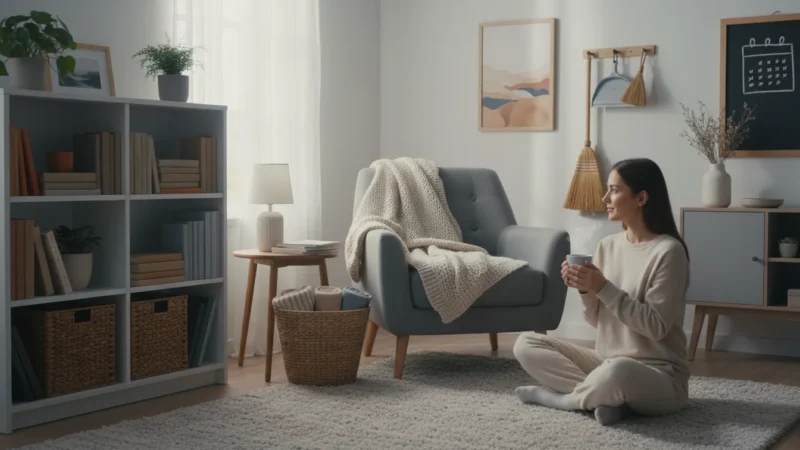


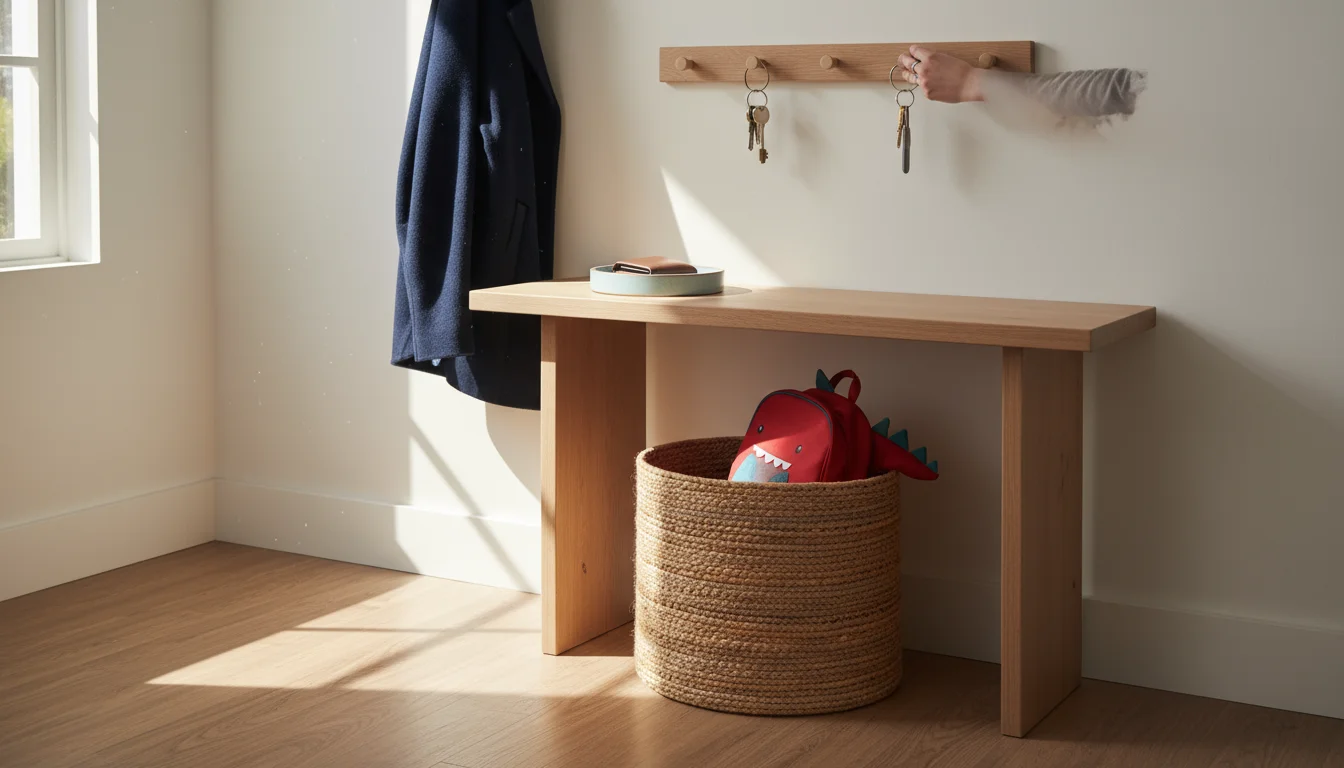
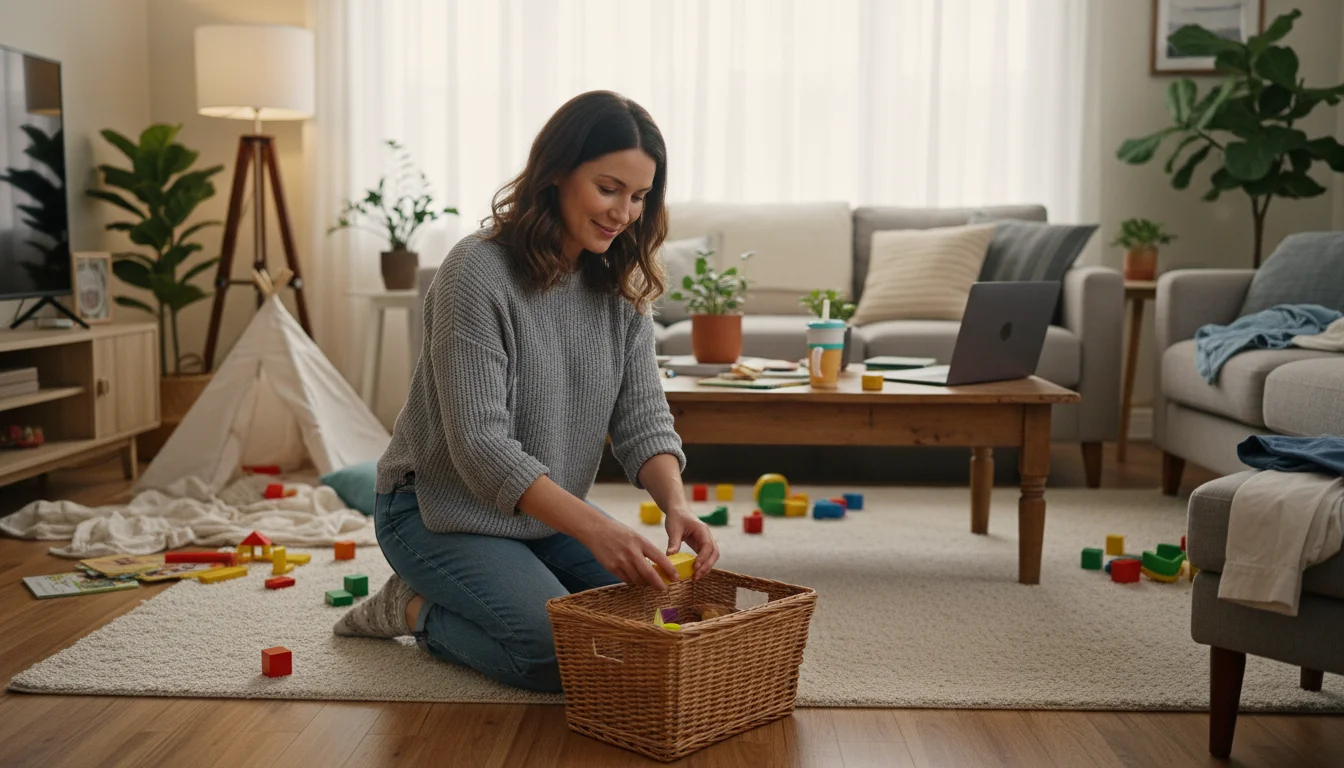
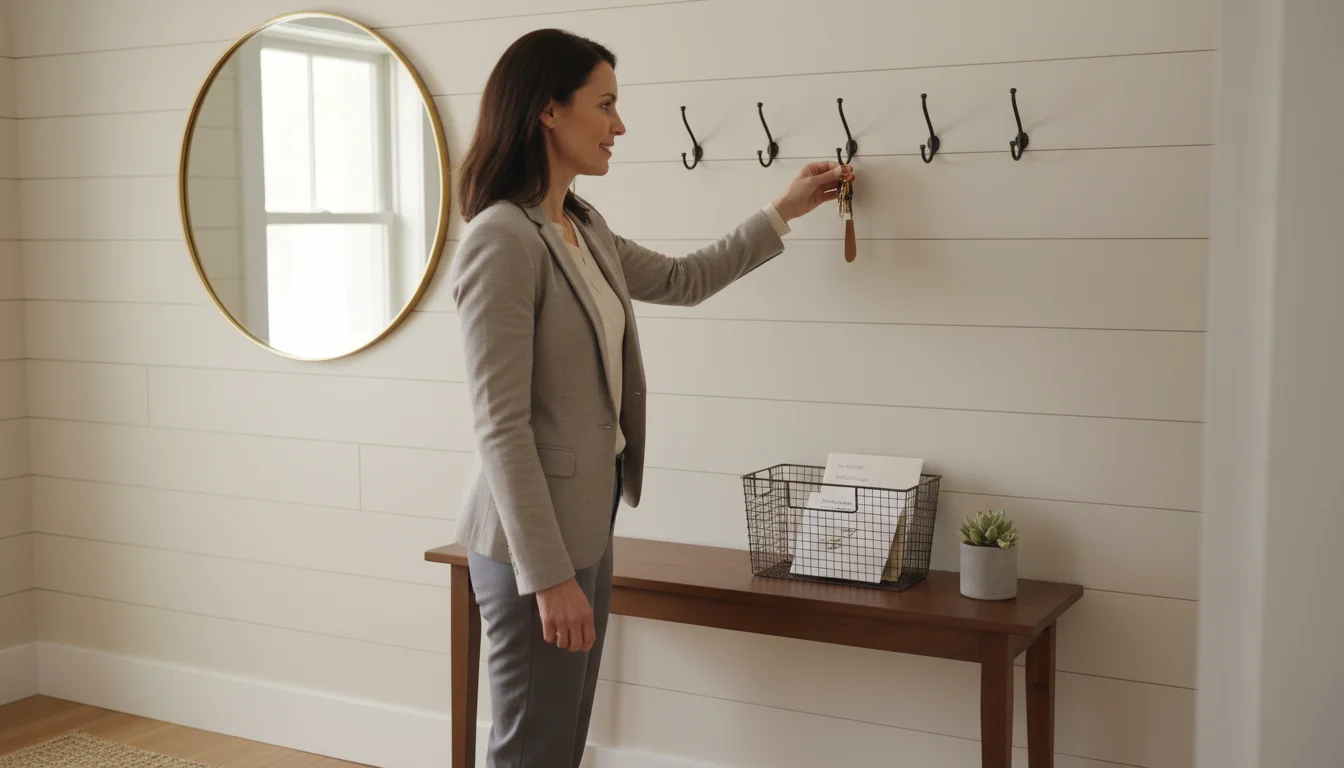
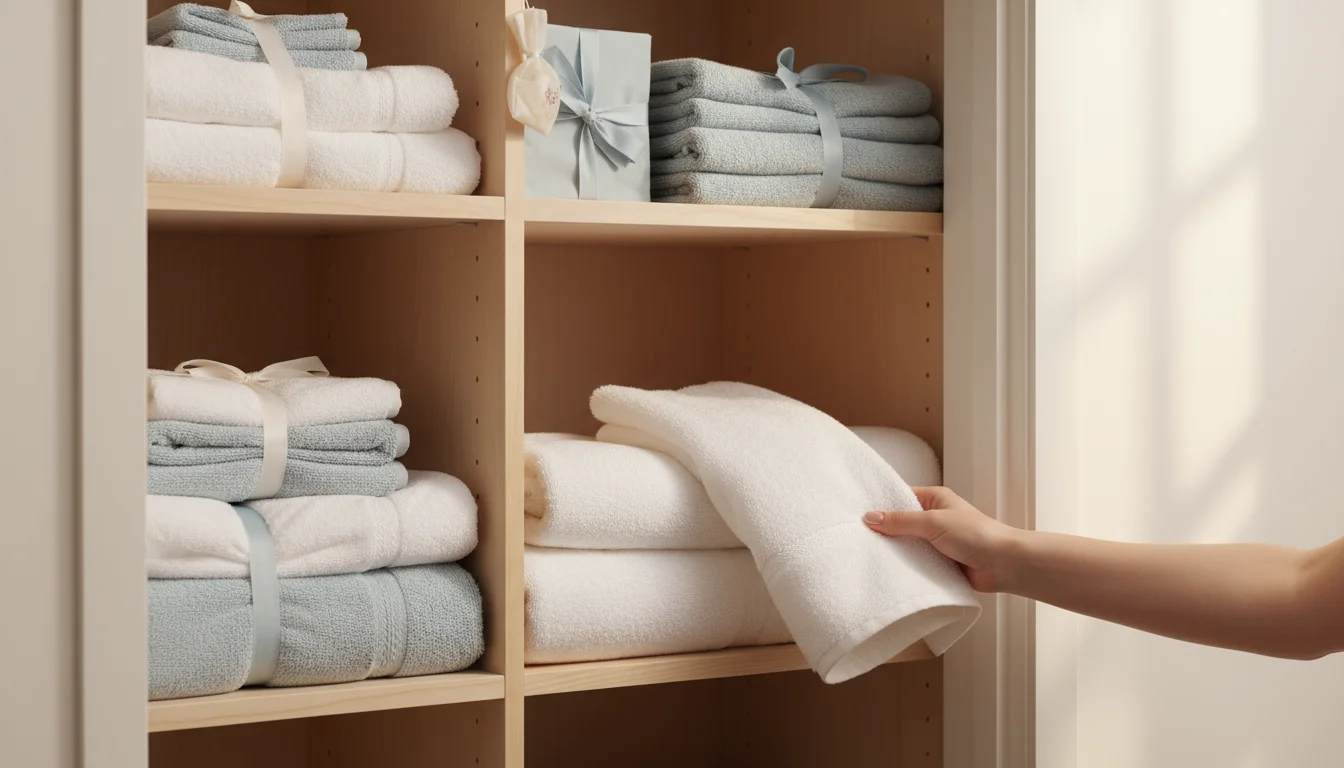
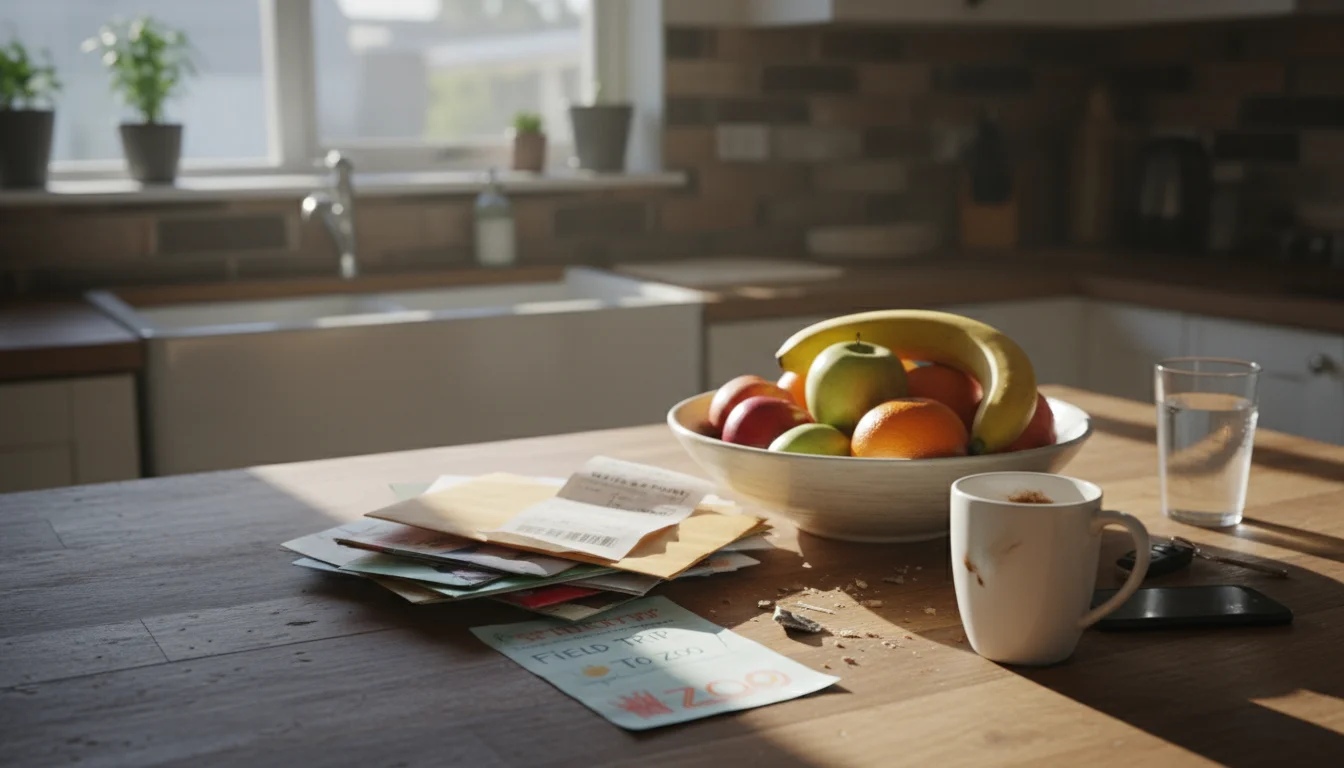
Leave a Reply